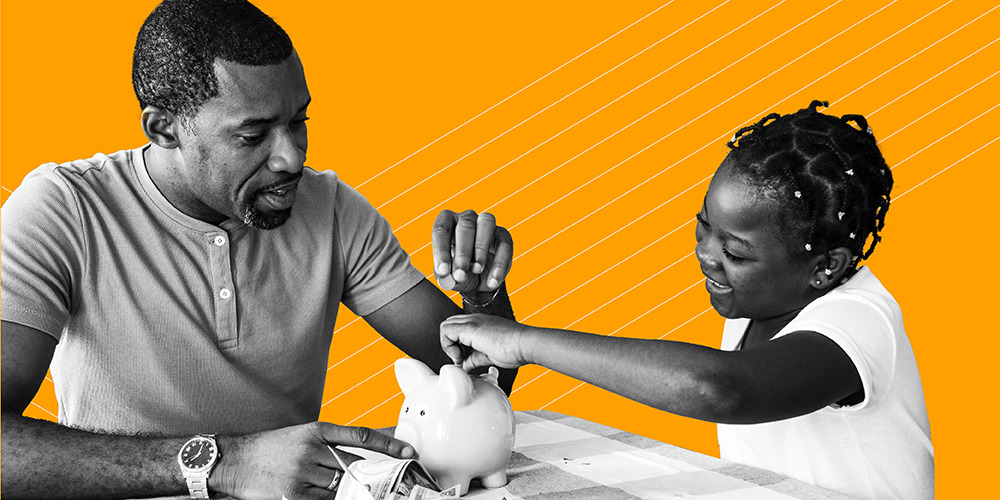41% of Americans Plan to Spend More Post-Pandemic and 40% Don't Think Their Saving Abilities Will Change

The COVID-19 pandemic brought normal life to a screeching halt. Many of us hunkered down at home, got acquainted with the work-from-home life, and tried to "flatten the curve." Others, who were deemed essential workers, still went to work while facing restrictions when they clocked out. But what impact did that have on the spending and saving of Americans? Further, how will spending and saving trends change as COVID-19 restrictions ease? In April of 2022, OppFi commissioned The Harris Poll to conduct an online survey and gain some insight. Here's what we learned after surveying 2,071 U.S. adults.
Many Americans plan to spend more post-pandemic
During the height of the coronavirus pandemic in 2020 and 2021, 36% of Americans said they spent less than they did pre-pandemic. Now that COVID restrictions have eased, 41% say that they think they'll spend more than they did during the pandemic.
The reasons behind the planned increases in spending are likely due to more freedom of movement as a result of the easing of COVID-19 restrictions as well as because of the inflation we're currently experiencing. As of May 2022, the All Items Index provided by the Bureau of Labor Statistics (BLS) reported an inflation rate increase of 8.6%, a level unseen since 1981. Typically, the annual inflation rate change is less than 2%.
That said, we asked Americans where they plan to spend more in 2022. Here's some of what they said:
- 66% - Food (51% said they'll spend more on groceries while 39% said they'll spend more eating out)
- 48% - Gas
- 32% - Clothing
- 32% - Travel
- 23% - Entertainment (concerts, sporting events, shows, etc.)
- 21% - Hobbies
- 21% - Coffee
These expenditures all point to a more active life outside of the home. After various lockdowns, it looks like Americans are ready to spend a bit more on going out, whether that's heading back to the office, on vacation, to events, or enjoying their hobbies with a Starbucks (or other coffee of choice) in hand.
Nearly half of Americans don't think their savings will change post-pandemic
When it comes to saving, many Americans said their habits didn't change during the pandemic and likely won't change now that COVID-19 restrictions are easing. Here's a closer look at what we found:
- 28% saved more during the pandemic than pre-pandemic
- 32% saved less during the pandemic than they did pre-pandemic
- 40% said their savings didn't change
When asked if they think they'll save more now that COVID-19 restrictions are easing:
- 33% think they'll save more
- 27% think they'll save less
- 40% don't think their savings will change
Factors such as household income, education, and employment impact who will be able to maintain or grow their savings. For example, 40% of those with household incomes of $100k or more said they will be able to save more post-pandemic, while only 26% of those with household incomes of less than $50k and 30% of those with household incomes of $50-$74.9k said the same.
Moving into the new normal
As of June 2022, many schools are back in session, mask mandates are lifted in most areas, and a portion of people are going back to working on-site. Beyond that, inflation is rising, leading to further financial strain and stress. So what does that mean for the spending and saving of Americans?
As expected, Americans plan to spend more on things like eating out, travel, gas, and clothing as restrictions ease. Despite this, most don't expect to see a change in their ability to save, but only time will tell whether their predictions are correct for the coming year.
--------------------------------------------------------------------------------------------------------------------------
Survey Method:
This survey was conducted online within the United States by The Harris Poll on behalf of OppFi from April 7-11, 2022 among 2,071 U.S. adults ages 18 and older. The sampling precision of Harris online polls is measured by using a Bayesian credible interval. For this study, the sample data is accurate to within +2.8 percentage points using a 95% confidence level. For complete survey methodology, including weighting variables and subgroup sample sizes, please contact oppu@opploans.com.





